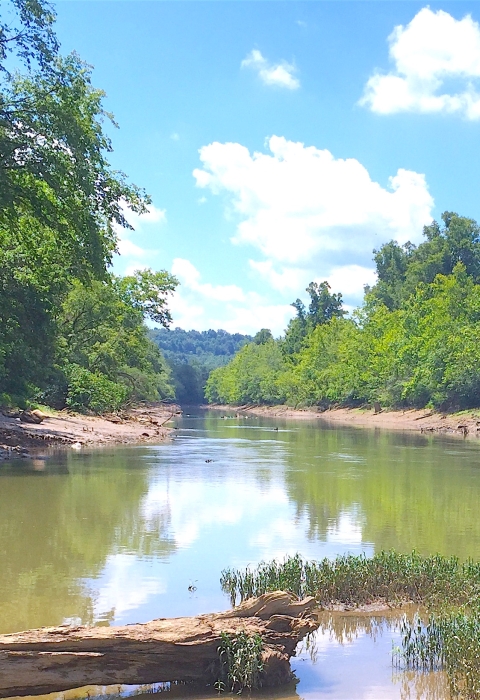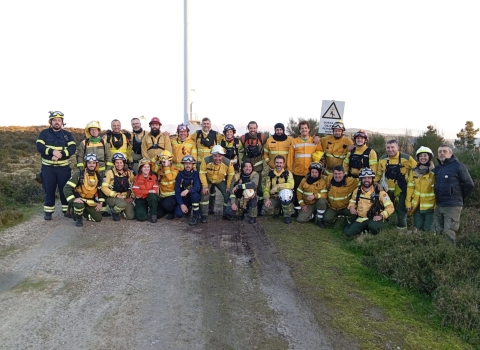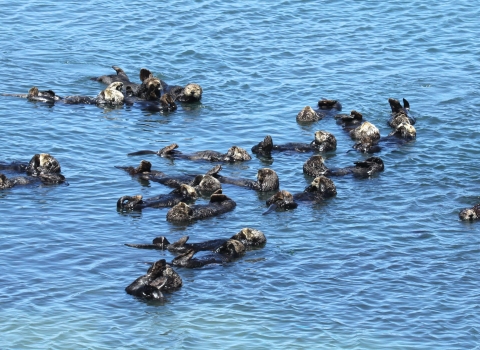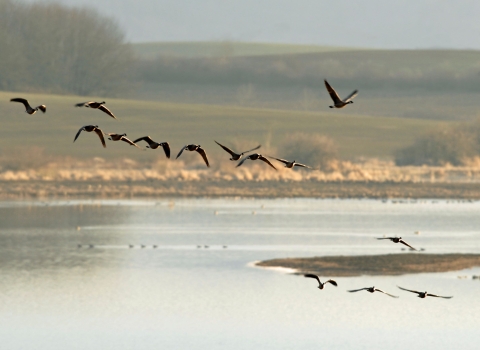When the Bipartisan Infrastructure Law Bipartisan Infrastructure Law
The Bipartisan Infrastructure Law (BIL) is a once-in-a-generation investment in the nation’s infrastructure and economic competitiveness. We were directly appropriated $455 million over five years in BIL funds for programs related to the President’s America the Beautiful initiative.
Learn more about Bipartisan Infrastructure Law (BIL) was signed, road and bridge repair and buildings probably popped into many people’s minds.
But I thought of restored wetlands, dam removals to improve wildlife habitat and public safety, endangered fish and national fish hatcheries, and tackling the threats of invasive species invasive species
An invasive species is any plant or animal that has spread or been introduced into a new area where they are, or could, cause harm to the environment, economy, or human, animal, or plant health. Their unwelcome presence can destroy ecosystems and cost millions of dollars.
Learn more about invasive species and climate change climate change
Climate change includes both global warming driven by human-induced emissions of greenhouse gases and the resulting large-scale shifts in weather patterns. Though there have been previous periods of climatic change, since the mid-20th century humans have had an unprecedented impact on Earth's climate system and caused change on a global scale.
Learn more about climate change .
Are projects in these areas considered “infrastructure”?
For the U.S. Fish and Wildlife Service, the answer is an emphatic “yes.”
I like to think of the Service’s mission — working with others to conserve, protect, and enhance fish, wildlife, and plants and their habitats for the continuing benefit of the American people — as having three interrelated parts.
The $91 million we’ll receive in direct appropriations each of the next five years will help us accomplish each part of our mission:
- “Working with others”: Our infrastructure projects will enhance our ability to work collaboratively with nongovernmental organizations, state and local agencies, Tribes, private landowners, industry, and perhaps other partners we have not yet engaged.
We already met with Tribes in Northern California about the anticipated funding opportunity in the Klamath Basin. We expect $162 million over the next five years for Klamath restoration activities. And our meetings with partners and others will continue as we embark on BIL-related projects.
- “To conserve, protect, and enhance fish, wildlife, and plants, and their habitats”: You will read in this issue of Fish & Wildlife News about a few projects we consider “infrastructure” that support our conservation work. They’re green infrastructure and dam removals, fish passage fish passage
Fish passage is the ability of fish or other aquatic species to move freely throughout their life to find food, reproduce, and complete their natural migration cycles. Millions of barriers to fish passage across the country are fragmenting habitat and leading to species declines. The U.S. Fish and Wildlife Service's National Fish Passage Program is working to reconnect watersheds to benefit both wildlife and people.
Learn more about fish passage projects and habitat restoration. These are the types of amazing conservation projects the BIL will support.
As our North Atlantic-Appalachian Regional Director, Wendi Weber, explains, these efforts will help the country adapt to the changing climate. This benefits wildlife, for sure, but also us, which leads us to the last part of our mission:
- “For the continuing benefit of the American people”: Beyond climate change, the projects in this issue promote road safety, local economies, accessibility, and outdoor recreation. Projects funded by the BIL will also advance Environmental Justice. All while helping wildlife.
The BIL will also fund efforts to address intensifying drought, wildfires, flooding, and legacy pollution. It is the largest investment in the resilience of physical and natural systems in American history. And we are ready to put those resources to work: one culvert, one wetland, one partnership at a time.




